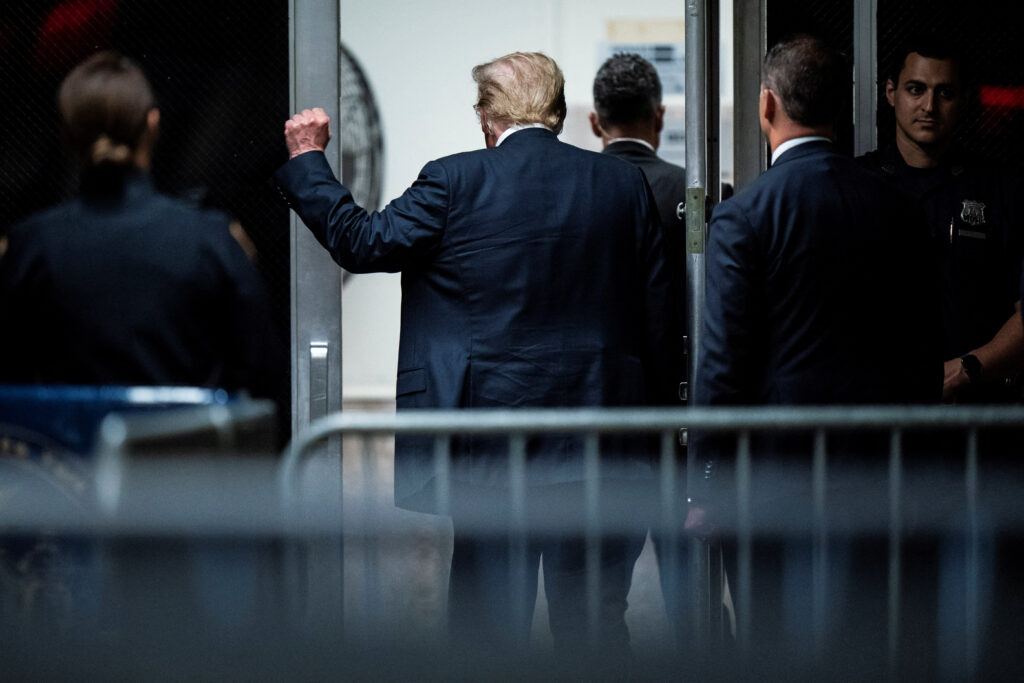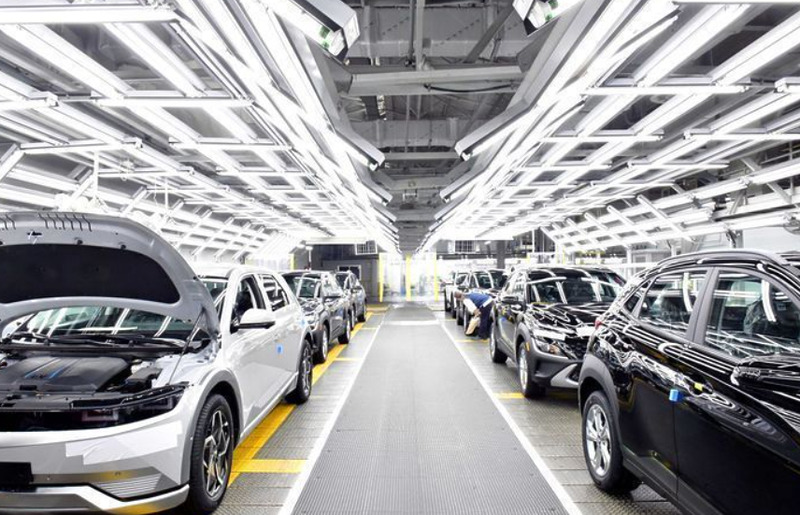[동아시아포럼] 미국의 전기차 시장 정책
미국 인플레이션감축법 영향력의 세계화 전기차 경쟁 속 아-태 국가들은 자국에 유리한 행동전략 추구해야 점점 확대되는 전기차 시장에서의 중국 영향력, ‘디리스킹’으로 전환한 美
[동아시아포럼]은 EAST ASIA FORUM에서 전하는 동아시아 정책 동향을 담았습니다. EAST ASIA FORUM은 오스트레일리아 국립대학교(Australia National University) 크로퍼드 공공정책대학(Crawford School of Public Policy) 산하의 공공정책과 관련된 정치, 경제, 비즈니스, 법률, 안보, 국제관계에 대한 연구·분석 플랫폼입니다.
지난해 8월 발효된 미국의 ‘인플레이션감축법(Inflation Reduction Act·IRA)’은 본격적인 전기차 시대를 향한 이정표로 통한다. IRA는 단지 미국의 자동차 산업을 바꾸는 것을 넘어 전 세계의 산업적·정치적 지형도를 뒤바꾸고 있다.
최근 미국은 첨단 반도체와 전기차 배터리 제조에 필수적인 핵심 광물에 대한 중국의 독점적 지위를 타파하기 위해 적극적인 외교 공세를 벌이고 있다. 미국의 광물자원 공급처 다변화를 위한 노력은 전 세계 전기차 산업을 재조정하는 결과로 이어지고 있다.

IRA는 △배터리에 들어가는 핵심광물의 40% 이상을 미국 및 미국과 FTA를 체결한 나라에서 추출 가공할 경우 전기차 및 연료전지차에 구입에 대한 세액 공제 △청정에너지 자동차 생산 지원을 위한 대출을 핵심 내용으로 한다. 이는 에너지 분야에서 지속 가능한 성장을 촉진하고 국내 제조업 역량을 강화하려는 바이든 행정부의 노력을 반영한 법안으로 평가된다.
미국 IRA의 세계적 확장과 전략적 동맹군 형성
최근 들어 IRA의 여파가 단순히 미국 내수에 미치는 영향을 넘어, 전 세계로 확장될 것이란 전망이 나온다. 지난 3월 미국·일본간 상대국으로 수출하는 배터리용 핵심 광물에 대해 수출관세를 부과하지 않겠다는 내용을 골자로 한 ‘광물협약’이 단편적인 예시다. 동 협약을 필두로 미국은 아시아-태평양 지역의 여러 국가들과 전략적 동맹군 형성을 꾀하고 있다. 리튬·철광석이 풍부한 호주도 기후변화 기본 정책인 ‘파워링 오스트레일리아(Powering Australia)’를 바탕으로 미국과의 광물협력을 강화했으며, 니켈 생산량 1위국인 인도네시아도 지난 7월 호주와 전기차 배터리 파트너쉽을 체결하며 동맹 형성에 동참하는 행보를 보였다.
미국의 제반 정책 변화도 IRA의 영향력을 확대시킬 것으로 전망된다. 미국 환경보호청(EPA)이 지난 4월 제시한 ‘차량 배출 기준 강화안(New Federal Vehicle Emissions Standards)’에 따르면 2027년식부터 2032년식 차량에는 이산화탄소 배출량을 10년 이내 56%가량 감축할 의무가 부과된다. 전기 자동차를 생산하는 것 외에 다른 선택지를 없앤 것이다. 바이든 행정부는 이를 통해 2022년 기준 5.8%에 불과했던 미국 자동차 판매 규모가 2032년에는 67%로 확대될 것으로 예측했다. 여기에 더해 배출 기준의 강화 및 인프라 법안 통과로 인한 전기차 충전 네트워크 구축 등 일련의 정책 변화는 주요 광물 자원 수요 증가에 대응하기 위해 북미와 아시아-태평양 동맹국을 아우르는 탄력적인 공급망을 구축하고자 하는 미국의 의도와도 궤를 같이한다.
전기차 경쟁 심화, 아시아 태평양 국가들에게 위기이자 기회
전 세계 자동차 산업이 전기차 중심으로 전환되면서 시장 선점을 위한 글로벌 경쟁도 치열해진 만큼, 주요 자동차 회사와 그 모국에 미치는 파급 효과 역시 상당할 것으로 보인다. 특히 한국과 일본은 △R&D 투자 압력 △점유율 하락 압력 △규제 강화 및 무역장벽 등 전례 없는 도전에 직면해 있다.
그러나 전기차 시장 주도권 쟁탈을 위한 경쟁 심화는 동시에 아시아-태평양 국가들에 적지 않은 기회를 제공하기도 한다. 실제로 전 세계 전기 자동차 제조업체들이 생산 기지로 태국을 주목하고 있으며, 호주·일본과 같이 많은 자원을 가진 국가들은 ‘자원의 무기화’를 통해 막대한 이득을 향유할 기회가 주어졌다. 이들 각국이 자국의 비교 우위를 활용해 인프라 및 혁신에 투자한다면, 아시아-태평양 국가들의 경제 성장을 견인하는 것은 물론 글로벌 영향력까지 확대할 수 있을 것으로 관측된다.
다만 △가격 변동성 △공급 중단 △지정학적 긴장 등과 같은 잠재적 위험을 초래하는 다양한 변수는 전기차 시장의 전망을 불투명하게 만들 수 있다. 현재 전기차 산업에 있어 가장 핵심적인 변수는 중국이다. 중국은 세계 흑연 매장량의 80%를 보유하고 있으며, 핵심 광물인 코발트·리튬의 제련 공정의 절반 이상을 장악하고 있다. 또한 광물 보유량부터 배터리 제조에 이르기까지 중국은 전기차 생산의 전 공정에 아우르는 독점력을 행사하고 있으며 자국 내 전기차 시장 역시 가파른 성장세를 보이고 있다. 이러한 중국의 막대한 영향력은 에너지 경쟁의 심화 및 미중 긴장의 고조라는 정치적 제약 속에서도 전 세계 시장을 좌우할 수 있는 힘을 실어 주고 있다.
전기차 시장의 미래, 중국에 대한 의존성 완화가 핵심
미국은 최근 일련의 정책들을 통해 지리적으로 분산된 글로벌 전기차 시장을 장악하기 위해 고군분투하고 있다. 특히 전기차 시장에서 중국이 차지하는 비중이 상당한 상황에서 중국과 디커플링(Decoupling-탈동조화)을 도모하려는 전략은 역효과를 낳을 가능성이 크다. 뿐만 아니라 의도치 않게 중국이 전기차 시장에서 입지를 공고히 할 수 있는 기회를 제공할 위험도 있다. 최근 미국 정부가 디커플링이 아닌 ‘디리스킹(derisking-위험감소)’으로 방향을 전환한 것도 이러한 이유에서다.
바이든 행정부의 에너지 정책들은 전기차 시장 역학을 재편하고 업계의 경쟁 구도를 재정의할 잠재력을 가지고 있다. 그중에서도 IRA는 아시아 태평양 전역으로 확대된 보조금 이니셔티브와 함께 전 세계 자동차 산업의 판도를 바꾸는 중이다. 이 과정 속에서 아시아-태평양 국가들은 다양한 기회와 도전에 직면했다. 특히 IRA는 아태 국가들이 중국의 전기차 시장 독점에 대해 ‘역균형화(counterbalancing)’를 꾀할 수 있는 좋은 기회기도 하다. 역균형화 실현의 열쇠는 아태지역 국가들의 전략적 선구안, 지역 협력, 신중한 정책 조정에 달려있다고 해도 과언이 아니다.
완전한 전기차 시대의 도래까지는 아직 갈 길이 멀다. 미중 간 기술 경쟁, 아태 지역의 전략적 동맹 등 여러 경제적·정치적 복잡성을 극복해야 하는 데다 각국의 전기차 인프라 역시 아직은 미비한 상태다. 그러나 한 가지 분명한 점은 미국과 아태지역 국가들의 다양한 정책 수립이 전기차 산업의 세계화를 비롯해 중국의 공급망 독점 완화에 기여하고 있다는 사실이다.
The United States shifts gears in the Asia-Pacific
The US Inflation Reduction Act (IRA) is a milestone on the path towards the electric vehicle (EV) era — a monumental shift with the potential to remodel not just the US automotive industry, but the global landscape. Washington is working to establish alternatives to China’s control over critical mineral resources within the Asia-Pacific region, potentially recalibrating the global EV industry.
![]()
With its targeted incentives, including a battery production tax credit and purchase incentives for EVs assembled in the United States, the IRA underscores President Joe Biden’s administration’s commitment to stimulating sustainable growth and bolstering its domestic manufacturing.
But the IRA will also have far-reaching global effects, as evidenced by the US–Japan agreement in March 2023. This accord, which allows metals sourced or processed in Japan to qualify for IRA subsidies, is a strategic manoeuvre and a signal flare. It could mark the initiation of a series of strategic alliances forming across the Asia-Pacific region. Australia, another resource-rich nation, recently jumped on the IRA subsidy initiative, and Indonesia, which has vast nickel reserves, seems ready to follow suit.
Other recent policy changes in the United States will amplify the impact of the IRA. The Biden administration’s ambitious new tailpipe emissions standards, in tandem with the directives proposed in the Bipartisan Infrastructure Law, accelerate the IRA’s push towards greener transportation.
Government projections suggest that under the full thrust of this multifaceted policy framework, EVs, which accounted for just 5.8 per cent of new vehicle sales in the US in 2022, could reach as much as 67 per cent of new vehicle sales in the United States by 2032. Collectively, these policy measures outline a comprehensive strategy for nurturing a resilient supply chain, encompassing both US and Asia-Pacific allies, ideally positioned to meet the escalating demand for critical minerals — the linchpin of emerging clean energy technologies.
As countries embark on the transition to EVs, a high-stakes global competition is emerging. Amid the contest for EV market share and industry leadership, the economic consequences of this rivalry are set to reverberate globally. Heightened competitive dynamics may compel legacy automakers and their home countries, including Japan and South Korea, to grapple with a vortex of challenges. These challenges include surging research and development investment needs, shrinking profit margins due to fierce competition from both new and established players, tightening regulations and the spectre of trade barriers.
Yet this flux of changes also creates opportunities. Manufacturing hubs like Thailand and resource-rich territories such as Australia and Indonesia stand to benefit. By capitalising on increased demand for resources and parts, these countries could stimulate their economic growth and expand their global influence, provided they leverage their comparative advantages and make strategic investments in infrastructure and innovation.
But outcomes hinge on a range of variables that pose potential risks, such as price volatility, supply disruptions, environmental or social impacts and geopolitical tensions. The most potent variable in this landscape is China, whose dominance in the EV supply chain is deep-rooted. The dominance is deeply entrenched in the upstream and midstream phases — from raw minerals through battery production. Yet it is China’s vast and rapidly expanding EV market that could further fortify this grip. This holistic control will continue to empower China to steer global markets even amid potential disruptions and escalating US-China tensions.
China, with such a vast influence over the EV supply chain and its capacity to leverage political pressure, is well-positioned to adroitly exploit shifts in supply-demand dynamics. The strategies that China might employ, drawing from historical precedents, include controlling prices and supply or even engaging in tactical diplomacy, such as strategically influencing trade agreements or imposing economic sanctions to exert pressure.
The United States, through its recent policy initiatives, is striving to gain control over a global market that is as geographically dispersed as it is vertically integrated — a Herculean task. In this pursuit, any strategic US endeavour to decouple from China will likely face intense pushback. Such pushback, combined with China’s potential to escalate its strategies, may inadvertently create opportunities for China to consolidate its market presence. This narrative underscores the intricacies of the high-stakes global competition and the nuanced balance required to navigate the future of EVs.
The Biden administration’s actions could reshape market dynamics and redefine the industry’s competitive landscape. The IRA — with the resulting subsidy initiatives stretching across the Asia-Pacific region — is altering the outlook for the global auto industry. A multifaceted array of opportunities and challenges lies ahead. For Asia-Pacific nations, this isn’t merely a challenge — it’s an opportunity to counterbalance China’s dominance in this emerging technology. The key to unlocking this potential lies in strategic foresight, regional cooperation and thoughtful policy calibration.
The journey into the uncharted territory of the EV era will be fraught with economic and political complexity. Yet each strategic step brings closer the vision of a balanced global EV industry and a future less dependent on a single player.
원문의 저자는 마츠시마 히로시(Hiroshi Matsushima)뉴욕대학교 법학전문대학원 정책무결성연구소 소속 경제연구원 입니다.




























